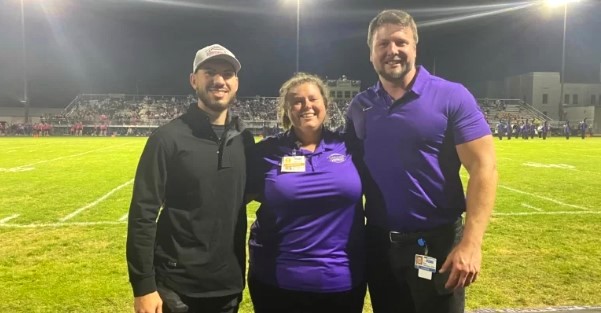Improve Your EAP: The Need for Athletes to Know the Location of AEDs
 A recurring and frightening scene in sports is an athlete collapsing during practice or a game. And if there is confusion about the location of the school’s Automatic External Defibrillator (AED), panic ensues.
A recurring and frightening scene in sports is an athlete collapsing during practice or a game. And if there is confusion about the location of the school’s Automatic External Defibrillator (AED), panic ensues.
Even when the location is known, the chaos is compounded when time is lost accessing the AED,
 Campbellsville AD, Tim Davis, believed his school was adequately prepared for such emergencies.
Campbellsville AD, Tim Davis, believed his school was adequately prepared for such emergencies.
They equipped every team with an AED and had emergency action plans (EAP) in place that designated coaches as primary responders.
However, during a recent athletic directors' meeting, Carol George, the Baptist Health Hardin Athletic Trainer program manager, highlighted a vital oversight.
She pointed out that while most schools have entrusted the coaches with emergency responsibilities, student-athletes are often unaware of the AED locations.
George emphasized that sports teams don't always have multiple coaches present, and in scenarios where the coach is the one needing assistance, the athletes should know what to do.
George stressed the importance of educating the athletes, saying, "If we don't have these conversations with our athletes, we have failed."
A sobering incident from Northern Kentucky underscores the gravity of the issue.
Soccer player Matt Mangine collapsed during a game, and while an AED was available mere yards away in a locked building, no one was aware of its presence. It took EMS 10 minutes to arrive, by which time Mangine had tragically passed away.
Chris Goodin, district athletic director for Taylor County Schools, emphasized the importance of practical training. He noted that while they have AEDs at every facility and are adding portable devices for off-site sports, it's crucial to ensure that all stakeholders, including students, are familiar with emergency protocols.
To make their emergency action plans more effective, Taylor County's fall sports have been running simulations. As Goodin rightly puts it, "You don’t know how to fix or tweak anything until you go and do your action plan.”
The primary lesson here is that while having emergency tools and protocols is essential, ensuring that every member of the team – from coaches to athletes – knows how to access and use these tools is equally critical.
This comprehensive approach ensures that in the face of emergencies, everyone is prepared to act swiftly and decisively.
![HR Logo [Recovered]_Full Color Vertical-1](https://blog.healthyroster.com/hs-fs/hubfs/HR%20Logo%20%5BRecovered%5D_Full%20Color%20Vertical-1.png?width=199&height=178&name=HR%20Logo%20%5BRecovered%5D_Full%20Color%20Vertical-1.png)
 By
By


